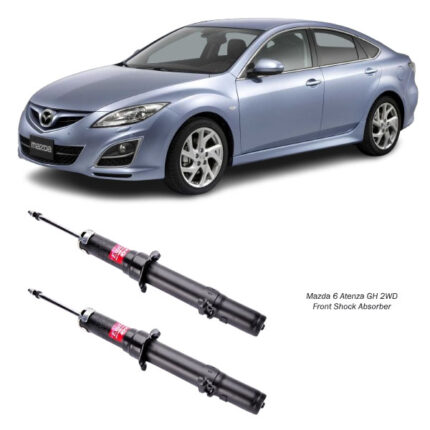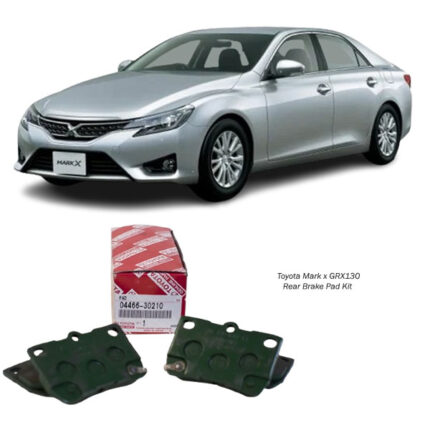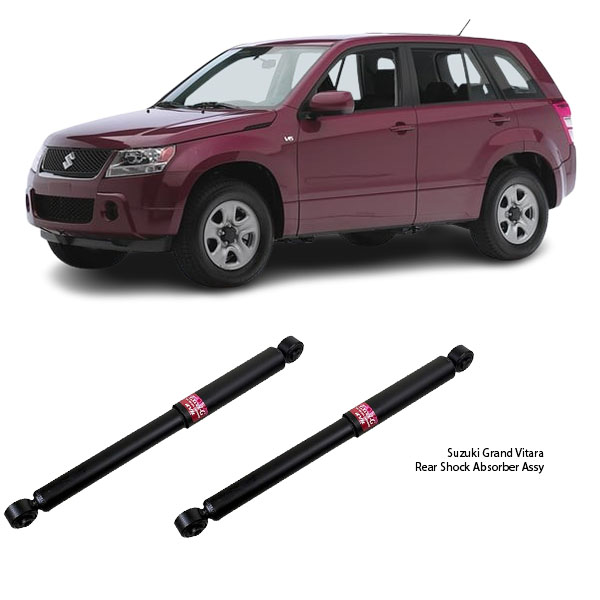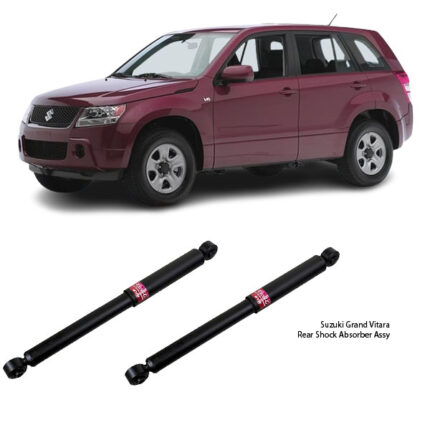Get Suzuki Grand Vitara Rear Shock Absorber Assy 343435 in Kenya
When it comes to your vehicle’s performance and comfort, it’s easy to focus on high-profile components like the engine or brakes. But there’s a quieter, equally important hero working behind the scenes—the Rear Shock Absorber Assembly. Mounted discreetly at the back, this crucial part of the suspension system plays a major role in absorbing road shocks, stabilizing load distribution, and delivering a smooth, controlled ride for passengers and cargo alike.
Despite its often-hidden position, the rear shock absorber assembly has a direct impact on your driving experience, safety, and even the lifespan of other parts of your car.
What Is a Rear Shock Absorber Assembly?
A Rear Shock Absorber Assembly is a part of the suspension system that connects the vehicle chassis to the rear axle or wheel knuckle. Its main function is to control motion and absorb the energy that results from driving over uneven surfaces, bumps, or potholes.
Unlike springs, which absorb energy, shock absorbers dampen and dissipate that energy to reduce unwanted bouncing or swaying. When the shocks are worn or damaged, you’ll notice a dramatic decline in handling, comfort, and stability—especially when driving with passengers or cargo in the back.
The typical components of a rear shock absorber assembly may include:
-
The shock absorber (damper) itself
-
Mounting bushings or brackets
-
Dust covers and bump stops
-
In some configurations, it may also include a coil spring (common in rear strut-type assemblies)
How Does It Work?
The science behind shock absorbers is straightforward but effective. Inside each shock is a piston and hydraulic fluid. As the rear suspension moves up and down over a bump:
-
The piston compresses fluid in a controlled way.
-
The resistance created slows the motion, preventing bouncing.
-
As the suspension returns to normal, the fluid dampens the rebound, ensuring stability.
This entire process occurs within fractions of a second, thousands of times during a single journey. Without this damping, the car would continue to bounce long after every bump.
Why the Rear Shocks Matter
Most of a vehicle’s focus tends to be on the front—steering, braking, engine weight. But the rear shock absorbers play an equally vital role, especially in vehicles that regularly carry passengers or cargo.
Here’s why rear shocks are essential:
1. Load Control
Rear shocks support and stabilize extra weight at the back. Whether you’re carrying luggage, passengers, or heavy tools, the shocks ensure that load is handled safely without bottoming out.
2. Comfort for Rear Passengers
Rear shock absorbers absorb jolts and vibrations that would otherwise be felt directly by passengers seated at the back. This contributes massively to ride comfort.
3. Road Grip & Traction
Shock absorbers ensure that rear tires stay in contact with the road surface. When shocks are worn, tire bounce increases, reducing traction—especially dangerous in wet or slippery conditions.
4. Better Handling
Whether you’re turning, reversing, or navigating hilly terrain, rear shocks keep the back of the car steady, minimizing sway, roll, or instability.
Signs of Worn Rear Shock Absorbers
Shock absorbers typically degrade gradually, but the effects can sneak up on you. Be on the lookout for:
-
Rear-end bouncing after driving over bumps
-
Nose-up feel during acceleration (opposite of front-end dive)
-
Uneven or rapid tire wear at the rear
-
Oil leaks on the shock absorber body
-
Clunking noises when driving over bumps
-
Increased swaying or fishtailing, especially at higher speeds
-
Vehicle instability when carrying load
These signs suggest that the dampening ability of the rear shocks has diminished, and replacement is recommended to restore performance and safety.
Construction & Materials
High-quality rear shock absorber assemblies are engineered to handle harsh conditions and frequent motion. Key construction elements include:
-
High-grade steel pistons and rods for durability
-
Precision valves for responsive fluid flow control
-
Hydraulic or gas-charged designs (nitrogen-charged shocks resist foaming)
-
Corrosion-resistant coatings to withstand moisture and debris
-
Heavy-duty bushings and mounts to reduce vibration and noise
Some shocks are designed for off-road or heavy-duty use, with thicker rods and reinforced tubes to handle extra strain.
Maintenance & Replacement
Shock absorbers are wear-and-tear items and typically do not require maintenance—but they do need regular inspection and eventual replacement. Here’s what you need to know:
When to Inspect:
-
Every 20,000–30,000 km, or during routine servicing
-
After off-road use or driving on poorly maintained roads
-
If you frequently carry heavy loads
When to Replace:
-
If any signs of wear are evident
-
At around 50,000–100,000 km, depending on driving habits and road conditions
-
Always replace shocks in pairs (left and right) for consistent performance
Environmental Responsibility
Many shock absorber manufacturers now use eco-friendly production techniques, and the materials (steel, aluminum, rubber) are fully recyclable. When replacing your rear shocks, ask your technician to dispose of the old ones through a certified recycling center.
Professional Installation Tips
Installing rear shocks is less complex than front struts, but proper installation still requires skill and care. A qualified technician will:
-
Use the correct torque for mounting bolts
-
Inspect and possibly replace worn bushings or mounts
-
Test ride the vehicle to ensure balance and function
-
Perform alignment if necessary (especially after full suspension service)
Improper installation can lead to clunking noises, misalignment, or premature wear—so professional handling is key.
Driving Experience With Good Rear Shocks
Once new rear shocks are installed, the improvement is often immediate and noticeable. You’ll enjoy:
-
Reduced rear-end bouncing and swaying
-
Better road grip and stability
-
Improved comfort for rear passengers
-
Safer braking and cornering with load
-
Longer lifespan for tires and other suspension parts
Whether you’re navigating city potholes or cruising down the highway, the difference in ride quality, handling, and confidence will be clear.
Follow us on Facebook for more parts.




